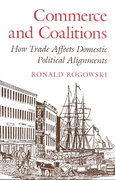Question
1. (04.01 LC) Bonds, stocks, and mutual funds are examples of ________ assets, while land, buildings, and vehicles are examples of ________ assets. (2 points)
1.
(04.01 LC) Bonds, stocks, and mutual funds are examples of ________ assets, while land, buildings, and vehicles are examples of ________ assets. (2 points)
| real; fixed | |
| real; current | |
| financial; real | |
| current; financial | |
| fixed; financial |
2.
(04.01 MC) How does an increase in interest rates affect the opportunity cost of holding money and the repayment to creditors? (2 points)
| |||||
| |||||
| |||||
| |||||
|
3.
(04.02 MC) Several major natural disasters disrupt supply lines and increase the expected inflation rate from 3% to 5%. If previously the real interest rate had been 6%, what is the new nominal interest rate? (2 points)
| 1% | |
| 10% | |
| 8% | |
| 11% | |
| 14% |
4.
(04.02 LC) In what situation would the expected real interest rate be negative? (2 points)
| The nominal interest rate is less than the expected inflation rate. | |
| The nominal interest rate is greater than the real interest rate. | |
| The expected inflation rate is greater than the actual inflation rate. | |
| The expected real interest is greater than the expected inflation rate. | |
| The actual inflation rate is greater than the nominal interest rate. |
5.
(04.03 MC) If a household consumer withdraws $5,000 from their savings account, initially, M1 will ________ and M2 will ________. (2 points)
| decrease; decrease | |
| decrease; increase | |
| increase; be constant | |
| increase; decrease | |
| increase; increase |
6.
(04.03 MC) Which of the following statement shows the difference between the monetary aggregates M1 and M2? (2 points)
| M1 includes the monetary base, travelers' checks, and demand deposits, while M2 only includes the money in circulation. | |
| M1 includes only the money in circulation, while M2 is composed of savings accounts. | |
| M1 includes the monetary base and travelers' checks, while M2 includes savings deposits. | |
| M1 includes the monetary base, travelers' checks, and demand deposits, while M2 includes M1, time deposits, and savings deposits. | |
| M1 includes only travelers' checks, while M2 includes M1, market shares, and savings deposits. |
7.
(04.04 MC) Assume that a bank has a total deposit of $55,000 and the reserve ratio is 20%. What are the amounts of money that the bank will keep for itself and it will give out as loans? (2 points)
| The bank's fractional reserve is equal to $11,000, and the excess reserve is equal to $44,000. | |
| The bank's fractional reserve is equal to $11,000, and the excess reserve is equal to $55,000. | |
| The bank's fractional reserve is equal to $44,000, and the excess reserve is equal to $11,000. | |
| The bank's fractional reserve is equal to $55,000, and the excess reserve is equal to $66,000. | |
| The bank's fractional reserve is equal to $55,000, and the excess reserve is equal to $44,000. |
8.
(04.04 MC) Use the data table to answer the following question.
| Assets (billion $) | Liabilities (billion $) |
|---|---|
| Total reserves 3,000 | Deposits 18,000 |
| Loan 15,000 | |
| Total 18,000 | Total 18,000 |
Assume the required reserve ratio to be 10%. Is the bank holding any excess reserve? If so, then what is the magnitude of the excess reserve? (2 points)
| No, the bank is not holding any excess reserve. | |
| Yes, the bank is holding an excess reserve of $1,200 billion. | |
| Yes, the bank is holding an excess reserve of $1,260 billion. | |
| Yes, the bank is holding an excess reserve of $1,800 billion. | |
| Yes, the bank is holding an excess reserve of $1,860 billion |
9.
(04.05 MC) Which of the following statements is correct about the demand for money, supply of money, and the nominal interest rates? (2 points)
| The demand for money is inversely related to the nominal interest rates, and the supply of money is positively related to the nominal interest rates. | |
| The demand for money is positively related to the nominal interest rates, and the supply of money is inversely related to the nominal interest rates. | |
| The demand for money independent of the nominal interest rates, and the supply of money is positively related to the nominal interest rates. | |
| The demand for money is inversely related to the nominal interest rates, and the supply of money is independent of the nominal interest rates. | |
| The demand for money is positively related to the nominal interest rates, and the supply of money is independent of the nominal interest rates. |
10.



Step by Step Solution
There are 3 Steps involved in it
Step: 1

Get Instant Access to Expert-Tailored Solutions
See step-by-step solutions with expert insights and AI powered tools for academic success
Step: 2

Step: 3

Ace Your Homework with AI
Get the answers you need in no time with our AI-driven, step-by-step assistance
Get Started


